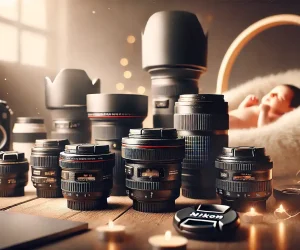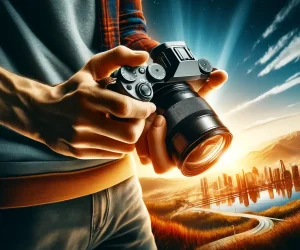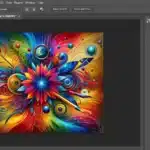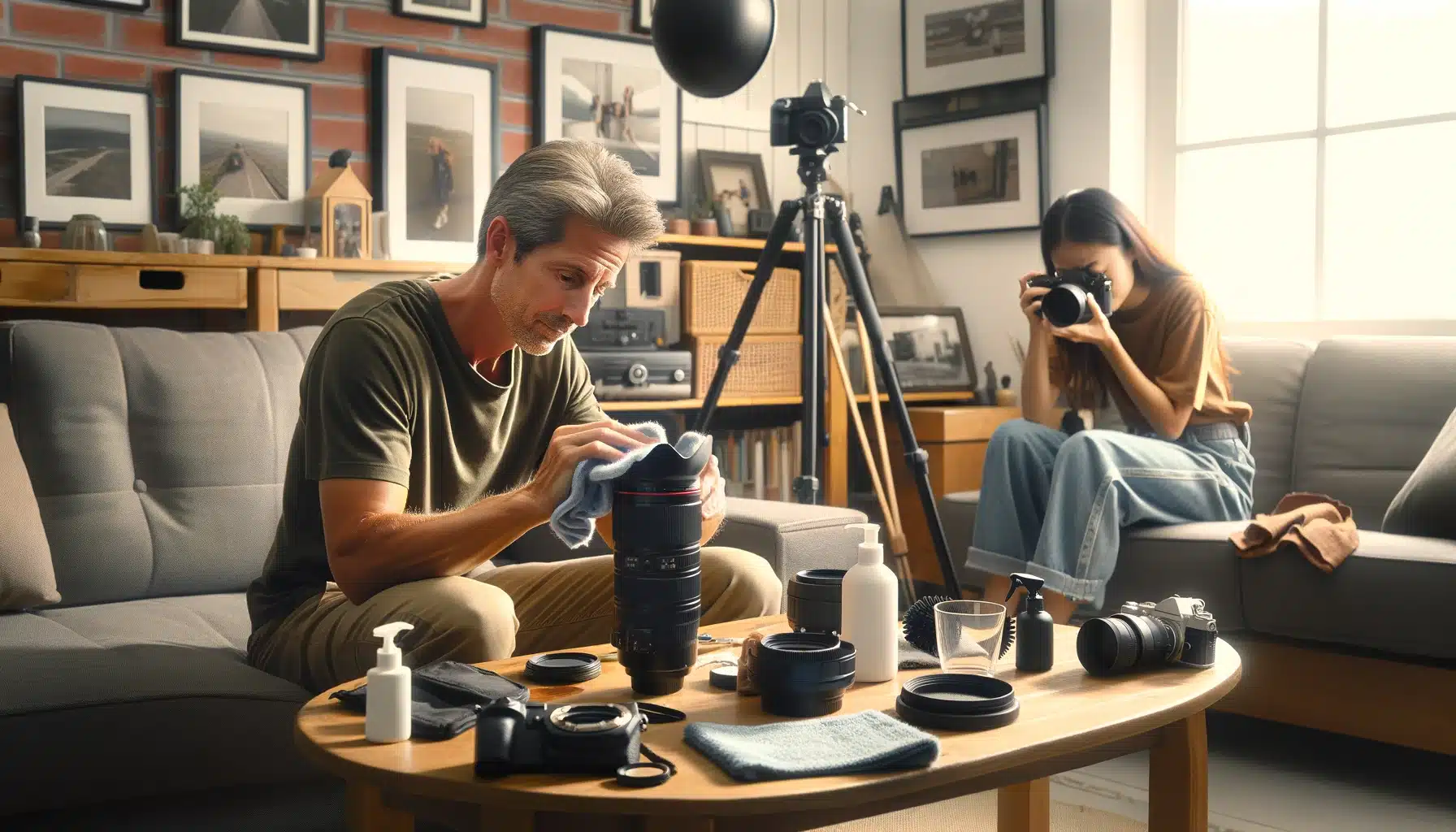
Introduction to How to Clean Camera Lens
Cleaning your camera lens is essential for capturing high-resolution images. Over time, dust, fingerprints, and smudges can accumulate on your lens, leading to blurry and degraded photos. For instance, consider a wildlife photographer who traveled to a dusty savannah.
The lens gathered a fine layer of muck, which initially seemed minor, but eventually, the images began to show noticeable spots and a lack of sharpness. After using a holler and a soft-bristled skirmish specifically designed for camera lens care, the clarity of the photos was restored, highlighting the importance of regular lens maintenance. To ensure clear and smudge-free photos, learning how to clean camera lense properly is essential for any photographer, from amateur to professional.
Effective lens care isn’t just about occasional cleaning different types of lenses; it involves using the right tools and methods to avoid damaging the lens coatings. Think of it as akin to caring for a high-end sports car; you wouldn’t use a rough sponge to clean the paintwork for fear of scratches. Similarly, employing a gentle lens brush or microfiber cloth to clean camera lens ensures you remove debris without harming the lens. This approach not only preserves your equipment but also guarantees consistently clear photographs, essential for any serious photographer.
When using camera tethering, a dirty lens can lead to frustrating experiences as imperfections are magnified on larger screens, complicating the editing process. Further, in self-portrait photography, smudges or dust can obscure fine details, affecting the expression and mood captured.

Table of Contents
Essential Tools for Cleaning Your Camera Lens

Microfiber Cloth
The microfiber cloth is indispensable for removing fingerprints, oil, and muck from the lens safely. Its fluffy synthetic fibers are designed to trap grunge and oil effectively, ensuring no scratches are left on the lens. It’s crucial to use a clean stuff every time to avoid redepositing dust on the lens, and if it’s a reusable type, it should be washed regularly to maintain its effectiveness. A common question among new photographers is how to clean camera lenses without leaving streaks, which can be achieved using a proper lens cleaning solution and a microfiber cloth.
Lens Holler (Lens Maintenance Techniques)
A lens holler is a simple yet crucial tool for removing loose dust and debris. Made typically from rubber or silicone with a plastic nozzle, it directs a stream of air onto the lens, dislodging particles without physical contact. This helps prevent the lens from getting scratches that can happen with direct contact and ensures that no additional smudges are created during the cleaning process. If you’re wondering how to clean camera filters, the process is similar to lens cleaning but requires extra care to not scratch the delicate coatings. Many online tutorials on how to clean camera bodies recommend using a blower first to remove dust before wiping the body down with a slightly damp cloth.
Lens Brush
The lens brush is specifically designed to clean camera lens, featuring ultra-fluffy bristles, often made of camel hair, to remove the particles. It must be used with care, ensuring it is always clean and dry before use to avoid transferring oils or other contaminants back onto the lens. Its design allows for the precise cleaning of hard-to-reach areas around the lens without damage to the glass of the lens.
A clean lens is crucial in photography for achieving accurate and high-quality images. When using tools like Photoshop to enhance light effects or edit photos, the clarity of your lens directly impacts the final result. By mastering Photoshop through a dedicated course, photographers can elevate their skills in editing, but this process is most effective when starting with a clean lens.
| Tool | Use Case | Material | Where to Use |
|---|---|---|---|
| Microfiber tissues | Wiping superficial layer of lens | Fluffy fiber, cotton tissues | Lens face, viewfinder |
| Lens Blower | Removing loose particles | Rubber, Plastic | Lens face, camera body |
| Lens Brush | Nudge off dirt | Fleecy bristles | Lens edges, hard to reach areas |
| Cleaning Reagents | Removing fingerprints, smudges | Non-alcoholic | Lens face |
Step-by-Step Guide to Cleaning Camera Optics
Cleaning your camera lens correctly is essential for maintaining image resolution and extending the lifespan of your equipment. Follow this detailed guide on how to clean camera lens to ensure that your lenses are kept in pristine condition.
Removing Loose Dust
Use a powerful air bellows to gently blow away loose particles. Hold the lens at a slight angle to help the debris fall off the surface. Removing particles first ensures that when you wipe the lens, you are not dragging any hard particles across it, which could scratch the lens. Lens flare can be a desired effect, unintentional flare caused by a dirty lens can ruin a good photo. Keeping your lens clean helps ensure that any lens flare is an artistic choice rather than a mistake.
Detailed Scouring
Use a soft-bristled brush to gently sweep the lens, initiating at the center and spiraling outwards. This method is effective for removing persistent particles that air blowers may leave behind, without causing any scratches on the lens glass. Incorporating this technique ensures that your camera maintains optimal ISO sensitivity, crucial for managing noise levels in low-light conditions.
Targeting Smudges
For smudges or fingerprints, wrap a clean microfiber tissues around your finger and apply a few drops of non-alcoholic lens cleaner cleaning reagent. Thoroughly wipe the lens in a circular motion from the center outward. The rag with a cleaning reagent can effectively confiscate oil residue without damaging the lens.
Preventive Measures to Keep Your Lens Clean
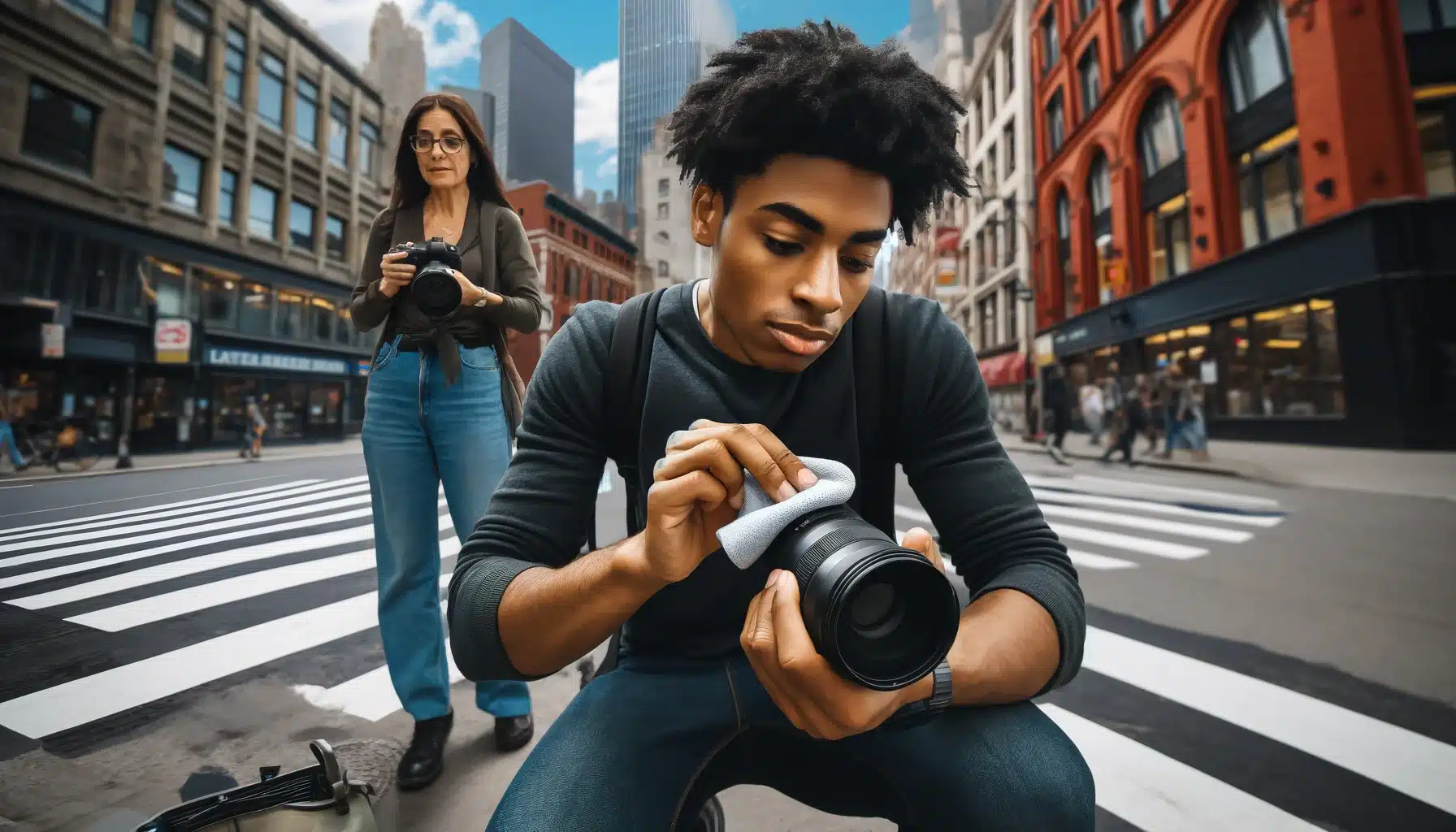
Clean camera lens not only improves the pixels of your photos but also extends the life of your shooting equipment. Here are straightforward measures to prevent your lenses from getting dirty, which will reduce the frequency of deep cleaning.
1. Keep Caps and Filters On
Maintain the integrity of your lenses by always securing the front and rear caps when they are not attached to your camera. Employ important photographic accessories such as UV or skylight filters to shield the front element of your lenses. These precautions are crucial, especially in HDR photography, where clarity and detail are paramount. Utilizing these filters can prevent vignetting and protect the lens surface from dust and debris accumulation, preserving image quality whether shooting in RAW or JPEG format.
2. Store Properly
Store your camera and lenses in a dry, clean environment. Use airtight camera bags and cases which provide padding and reduce the risk of your gear getting dirty or wet. Ensuring your storage area is clean and well-maintained is crucial.
3. Handle with Care
When changing lenses, be sure to do so in a clean environment. Avoid touching the glass elements with your fingers. Handling your equipment with care prevents smudges and dirt from transferring to the lens.
4. Regular Maintenance
Schedule regular maintenance for your camera and lenses. This includes using an accelerated air source to take away external dust for more stubborn particles on the camera body and mount. Regular reviews of your cleaning kit and techniques are also beneficial.
Here’s a table that outlines these preventive measures on how to clean camera lens:
| Action | Tools | Frequency | Purpose |
|---|---|---|---|
| Cap and Filter Use | Lens Caps, UV Filters | Always when not in use | Protect lens elements from dust and scratches |
| Proper Storage | Airtight Camera Bag | Continuous | Keep gear dry and free from dirt particles |
| Careful Handling | Clean Hands, Proper Technique | Every time you handle shooting equipment | Avoid transferring oils on the lens |
| Regular Maintenance | Hollers, Brush | Monthly or as needed | Eradicate accumulated dirt particles and check the condition of your tool |
Challenges Associated with Murky lens
Color Accuracy
For those adjusting white balance, a filthy lens can alter the light entering the sensor, leading to inaccurate color representation. This issue extends into more specialized fields such as wildlife clicks, where clarity is crucial for capturing the intricate details of animals in their natural environments. Here, having both standard and professional wildlife photography equipment in pristine condition is essential.
Challenges in Astrophotography Editing
Editing challenges arise particularly in astrophotography, where even minor obstructions like dust or smears can obscure vital details of celestial bodies when using Photoshop or Lightroom. Tools like the Replace Color Tool in Photoshop may not perform as expected if the original colors captured are distorted by dirt on the lens.
Dealing with Lens Flare Issues
A murky lens can cause unwanted lens flare, which, while sometimes a desired effect for artistic reasons, can ruin a photo if it occurs unexpectedly. This issue is particularly evident in software like Adobe Photoshop and Lightroom, where editing out such flaws can be time-consuming.
Importance across Photography Formats
The impact of unclean lens extends to all formats and types of camerawork—from RAW to JPEG, from HDR photography to simple shots intended for NFT markets. Keeping your lens clean is crucial not just for clarity and color accuracy but also for ensuring the longevity and optimal performance of your shooting gear.
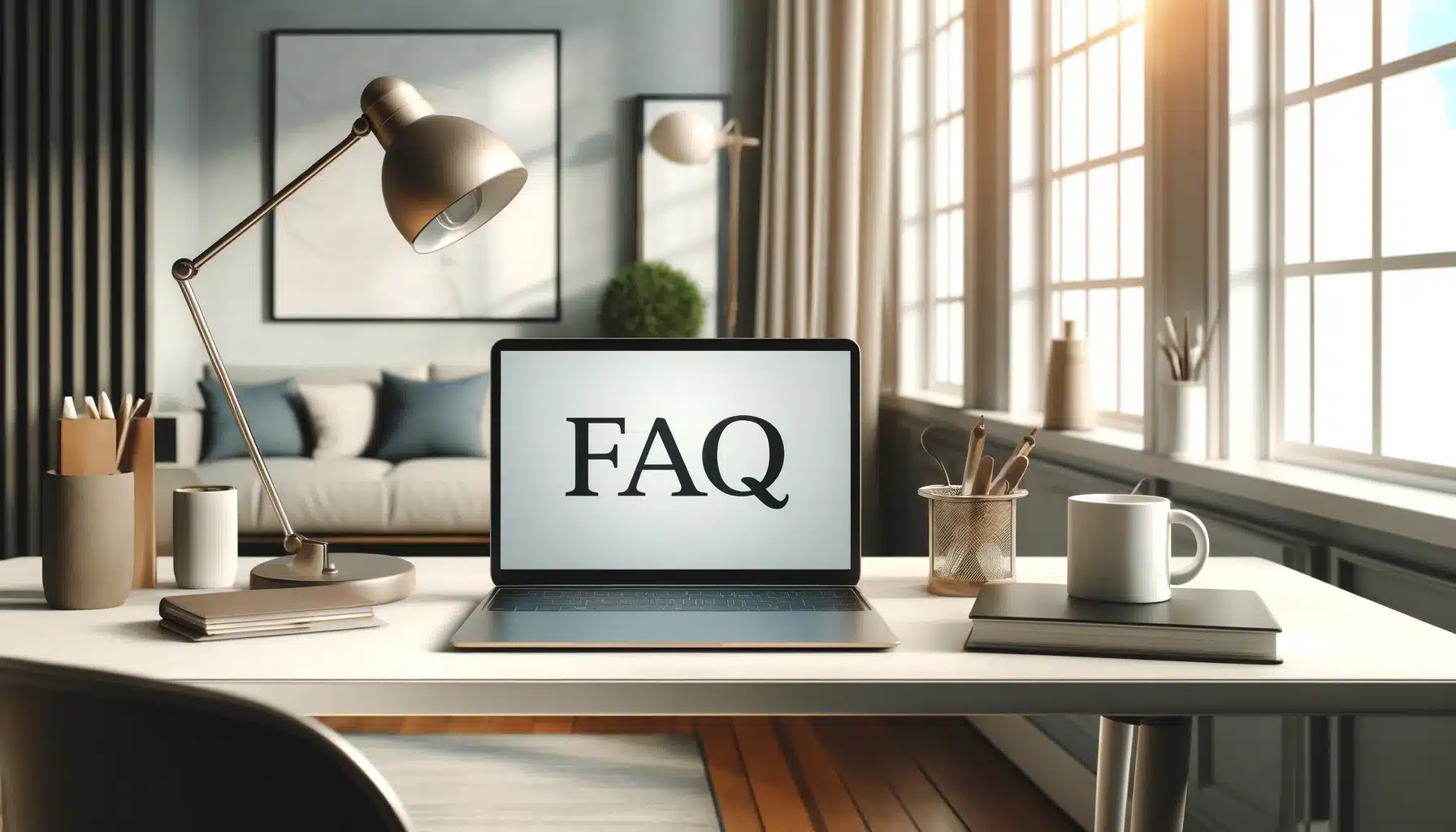
FAQs on How to Clean Camera Lens
What is the best way to clean a camera lens?
The best lens maintenance techniques involve several steps to ensure no damage to the lens or sensor. Start by using a holler to eliminate loose particles. Then, use a fleecy nudge to thoroughly eradicate any remaining particles. For smudges and fingerprints, use a fabric slightly dampened with a lens cleaner.
Is it OK to clean a camera lens with alcohol?
It is generally not recommended to clean camera lenses with alcohol as it can damage the lens coatings. Alcohol can strip away the protective coatings on the lens, leading to long-term damage. Instead, use a reagent specifically designed for camera lenses. If you must use alcohol, ensure it is a dilute reagent of isopropyl alcohol, and apply it sparingly using a rag.
Can I clean my camera lens with water?
Clean camera lens with water is not recommended unless it is waterproof or distilled. Tap water can contain minerals that might leave residue or spots on the lens. If there is no any other availability, use only a few drops on a rag to gently wipe the lens.
How do you clean a blurry camera lens?
A blurry camera lens is often the result of smudges, dust, or condensation. To clean it, start with a dry stuff to confiscate any loose particles. If the blurriness persists, use a lens cleaner on a microfiber tissue, applying gentle pressure in a circular motion from the center of the lens outward.
Conclusion
Throughout my journey as a photographer, maintaining the clarity and functionality of my camera lenses has always been paramount. Once, before an important shoot, I noticed my photos were turning out unusually soft.
Upon inspection, I realized a smudge on the lens was to blame. A quick, careful clean using the techniques discussed, starting with a holler and finishing with a fleecy tissue, restored the pristine condition of the lens and saved the day.
This personal experience underscores the importance of regular lens care, not just for preserving image quality but also for ensuring the longevity of valuable shooting equipment.
For those looking to deepen their understanding and skills in taking pictures, I highly recommend exploring our comprehensive Photoshop and Lightroom courses. These tutorials not only enhance your editing skills but also provide vital tips on camera care. Dive into our lessons on Photoshop course and Lightroom course to start elevating your shooting to professional levels.
Have a nice photoshoot!
Learn more about Photography Equipment:



